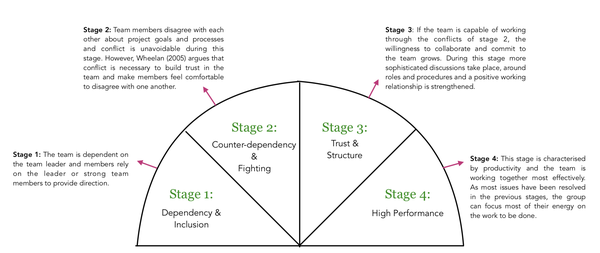Well done, Portugal
A country makes it illegal for your boss to text you after work. Why this is a good thing.
With the rise of smart devices, employees face a new challenge: The urge to be constantly reachable.
It has been a problem for a long time. However, the issue finally gets the attention it deserves. In the wake of the pandemic, people were forced to work remotely. As a result, companies had to speed up the digitalization of their processes. And it shed a highlight on mental health in the workplace in the already stressful environment created by Covid.
Under the new rules, employers could face penalties for contacting workers outside of office hours. Companies will also have to help pay for expenses incurred by remote working, such as higher electricity and internet bills.
Well done, Portugal!

The law will certainly help to create a better work-life balance. However, Portugal’s new rules are probably only a cure for symptoms but not for the origin of the problem.
One problem is the lack of leadership responsibility.
I, too, found myself often in a situation where an 8-hour day just wasn’t enough to accomplish everything I needed to do. Maybe because it took longer than expected, sometimes because I wasn’t happy with the result. In a management position, overtime is already accounted for and compensated by more vacation time or higher salary.
Nevertheless, as a leader, I have to be aware that those rules don’t apply to my team. I cannot forward the pressure to my colleagues. In fact, I don’t only have to put boundaries on my communication but also set them for myself.
Avoid being seen as “underperformers”
Of course, we all find ourselves on the receiving end of after-hour messages. The binging and banging of mail or Slack is an issue. They prohibit us from relaxation.
But while it’s tough for leaders to set boundaries, it’s even harder for an employee. They feel obligated to check in even after hours because they want to excel. They want to show that they care, that they go the extra mile. And in any circumstance, they want to avoid being seen as “underperformers”.
Naturally, this is very unhealthy short-term thinking. The impact that the always-on mindset has on mental health will, in the long run, destroy any gain that this behaviour brings along.
The real issue: Culture
Now, the easy way out is to say: It’s all the leadership’s fault. And clearly, they have the leverage to drive change. But the real issue here is, once again, a toxic work culture. It affects the leaders and employees alike.
We should ask ourselves the tough questions: Why do we work till late? Why do we keep sending and reading messages in our supposed free time? Is this behaviour expected in my workplace?
And most importantly: How does this behaviour affect us in our private and work lives?
The reasons might be highly individual (“I want to succeed in my career!”) or structural (“My company is understaffed!”).
We’re designing around the problem
Unfortunately, we rarely ask those essential questions. Instead, we accept tools that design around the problem. And yes, I very much include myself here because I use them regularly. The scheduler of messages on Slack or Gmail. Or Apple’s focus feature. Yes, they’re great. But they merely treat symptoms again.
Cultural change needs a lot of time. And time wasn’t ample when the pandemic hit. Confined to our apartments, the problematic symptoms of an always-on mindset got more and more severe. Next to restrictions in our personal lives, after-hour texting and mail contribute heavily to a stressful environment.
Therefore, there’s a need to regulate the new work reality. Portugal boldly moved forward with its regulations, forcing companies to overthink their culture, behaviours, and processes. It’s a forced approach, yes, but one that might improve the well-being of both employees and management.
Recommended Reads
- The Worst of Both Worlds: Zooming From the Office [Paywall possible]
- Proof That Positive Work Cultures Are More Productive
- Remote Work Is Fine. The Real Thing Scaring CEOs? Hybrid Work.
Best,

Leadership‘s role in mental health
As mental health awareness starts to unearth in Switzerland’s media industry, it’s essential to talk about leadership and its responsibility regarding mental health issues.
John works hard. He is passionate about his profession. John is very good at what he does, great even. He is competitive, often outperforming others in his team. John drives himself to give ever more, pushes his limits.
And after a couple of years, John gets a promotion. Now, John is in charge.
We all know a John. He’s neither the good nor the bad guy in the story. Instead, he’s a character who we maybe even aspire to be. Someone with great passion, dedication, and spirit. Someone who constantly tries to be better in what one does. John is not a problem for a company. Not until he gets promoted, at least.
Unfortunately, still, many businesses promote the best performers to leadership positions without training them in their new roles. Once you’re in charge, your responsibility shifts from tasks to people. And not everyone great at the job is automatically suited to manage a team.
I’ve written this before: A great leader’s most important job is to provide an environment where everyone can be the best version of themselves.
As mental health awareness starts to unearth in Switzerland’s media industry, it’s essential to talk about leadership and its responsibility regarding mental health issues.
A disregarded issue
A few days ago, I attended a panel on mental health by Switzerland’s young journalists’ association. And I once again realised how crucial leadership is to psychological safety and mental wellbeing in a company.
The media industry doesn’t face more significant challenges than others when it comes to digitisation. Shrinking advertising revenue thinned the personnel in newsrooms, distributing the ever-increasing pressure and speed on fewer shoulders.
However, journalism is not simply a business like retail but should also fulfil a broader role in society. So, the stakes are exceptionally high, which makes journalism a fascinating case.
Many disrupting debates are happening around journalism. The reflection in newsrooms (and parts of society) around diversity, inclusion and trust are vital. Actually, these debates should be held in an even broader fashion.
However, mental health is still mostly disregarded by media companies. The standard narrative: Journalism is a passion, not a profession. You need to really want it. You need to be a John.
“Young journalists cannot afford to have an opinion.“
Yes, it’s true: Most journalists I know have an almost unnatural passion for their job. And they are undoubtedly aware of the job’s societal significance. “You choose this profession because you burn for it. So you have to be incredibly careful that you don’t get burned out,“ explained Vinzenz Greiner recently in a video statement.
Those two aspects drive them to perform, even in circumstances where others might scratch their heads. For example, most newsrooms still don’t have a proper time reporting in place. Unpacking all the structural problems and their interconnections would exceed the limits of this post in an instant.
But one thing stood out to me while attending the mental health panel.
Stop focussing on your competition
How abandoning a competitor-focused mindset helps organisation‘s resilience.
Competition has led humanity to outstanding achievements. The USA raced against the Soviet Union to the moon. Athletes strive to shave off milliseconds to beat their competitors, providing thrilling entertainment.
I'm not against competition. However, in the business context, we often get it wrong, I think.
In every medium or large media company I've worked for so far, I've observed a specific behaviour: an almost obsessive focus on the competitors.
There are good reasons to check the stories of other newspapers. Journalism is a complex network of information gathering. Every journalist is contributing to paint a fuller picture. And it would be undoubtedly valid to ask: "Newspaper X wrote about issue Z. Is there another aspect of Z that we can cover?"
Practically, there's more copy and paste involved. A substantial amount of resources go into writing off competitors' stories. Partly, because it's a cheap way to fill your platform with content. Partly because newsrooms are terrified of not reporting something.
Here, a vicious cycle shows:
- Media companies lose ad revenue and lay off journalists.
- The remaining journalists struggle to keep the same amount of information flowing.
- As original reporting takes more time and money, the copying starts, and it feels like every news platform is reporting the same.
- The audience is unhappy and loses trust, creating an even more dire situation for the newsrooms.
The cycle is well-known, at least amongst media scientists, educators, and journalists themselves. "Do what you do best and link to the rest," said journalism professor Jeff Jarvis back in 2009 while describing his vision for the future of journalism.
And if you take the textbook definition of journalism, the lack of diversity is already a huge problem.
However, there's a second aspect impacted by the focus on competitors: product development.
The Product Problem of Journalism
Newsrooms are struggling with cultivating a product-driven mindset. Here are some of my thoughts on why this is the case.
I’ve wanted to write another newsletter for quite some time, yet I didn’t find a suitable topic to tackle. Since the last issue, I was heavily occupied with starting as Product Owner of blick.ch.
Additionally to the official certification, I also exchanged with other POs in the media industry. In the process, I realized that many colleagues are struggling with the same issues.
I also remembered an insightful listicle by Konrad Weber about the missing product-driven mindset in journalism [German].
Weber synthesizes his findings in six key reasons:
Let's talk about trust – but differently
Let’s talk about trust. Argh, I know what you think right now.
Let’s talk about trust.
Argh, I know what you think right now, and I admit: The last three newsletters covered this topic already in some ways. (And yes, I stumbled upon this good TED talk that gives some simple advice on building and rebuilding trust in an organization).
But bare with me for a moment, I want to tell you a little story about trust. And it has nothing to do with work – at least for now.
Back in July, I upgraded some of the components in my PC. It didn’t go smoothly, and I had some troubleshooting to do.
Nevertheless, I was thrilled by the experience; it was a lot of fun. So I continued, bought some cheap parts, and built a second system from scratch.
Simultaneously, I started to follow some tech-related creators on YouTube, like Bitwit, GamersNexus, or Jayztwocents.
As much as I enjoyed and learned from their content, I déformation professionelle kicked in, and I started to analyze their business model.
All of the mentioned channels have the classic pre- and midroll ads provided by YouTube. And every host bakes sponsorships into their videos where the host talks about a service or product. These short segments are somewhat secluded from the video’s main topic.
As a person with a flair for journalistic independence, I came to a surprising realization: Despite these native ads, I still trusted the creators.
And I asked myself:

What's Media Trust?
Currently, I’m writing my master thesis for Hyper Island around media trust. The academic research defines trust as a mechanism in helping people with the risk of an open future like planning or contracts.
Sociologist Niklas Luhmann explained that trust leads to reduced complexity of the future, and the trusting actor (aka the trustee) acts as if the future is limited to only a certain amount of possibilities.
Pretty simple so far, right?
Media trust is a bit different. Professor Bernd Blöbaum identified five antecedents of trust:
- Competence: the perceived skill of an actor to fulfil a task in a specific situation.
- Integrity: the consistency in past actions, a trustworthy communication of actors towards the trustee, and the faith that the trustee has a strong sense of fairness, and its actions are aligned with its promises.
- Benevolence: the trustee’s intention towards the trustor or the motives and interests that motivate action.
- Reputation: the degree to which a trustee can fulfil the expectations of a trustor.
- Symbols: e.g., academic titles, familiar typefaces, and article layouts, as well as rankings, ratings, and recommendations that can quickly be taken into the trustor’s quality assessment since they are transparent and visible.
The Key Factors
Now, let’s take these five indicators and map them to the YouTubers. They are indeed competent and knowledgeable in their space. However, competence is not the key factor in play; neither are symbols nor reputation.
For me, the two decisive antecedents are benevolence and integrity. As I learned more about these two factors, I went back and searched for examples that fall into benevolence and integrity.
One example is the following video by JayzTwoCents. He talks about a sponsor, NordVPN, that got hacked. Interestingly, he also talks about trust. And: He stopped working with NordVPN as he was unhappy about the way the company handled the data breach.
Another instance is a video wholly dedicated to transparency around sponsorship and the business model.
Integrity and benevolence also came into play in a video by GamersNexus, where host Steve is exceptionally candid about a specific company, probably damaging his business relations with them.
In a way, these examples are also symbols of trust as visible statements of transparency. I have limited possibilities as a consumer to judge whether the creators always follow through with their promises.
However, the fact that they talk openly about their business or be frank with companies they might rely on for content and sponsorships builds trust, at least for me.
Subscriber Vincenzo asked me three intriguing questions about the last issue’s topics. Here’s my advice.
Good morning; first, I have to say that I’m very grateful for the responses I got after the newsletters on manipulative communication. I highly appreciate and value the exchanges with all of you.
In the last issue, I wrote about countering manipulative behaviour in the workplace. Vincenzo, also a subscriber, had some great follow-up questions:
- How do you stay patient without acting uncivil?
- Where does the trust come from to be vulnerable?
- How do you translate this beyond your own (organizational) influence within a company?
Before answering Vincenzo’s questions, I want to state that my responses might not apply to everybody’s situation. Every person and every organization is different. These are just my suggestions drawn from my own experiences in various workplaces. Let me know in a reply how you would answer those questions.
How do you stay patient without acting uncivil?
To stay calm and patient can sometimes be challenging. We all have our tolerance for how much incivility and manipulation we can handle. To be frank: It merely depends on your character.
However, let me tell you about a confrontation I once had with a deputy editor-in-chief. I went up to him to discuss an early draft of a story. He took a short glance, and suddenly, he erupted. Yes, he shouted all over the place. I asked once what the problem was, but he didn’t calm down. So I retreated.

I did so because a) I don’t want to battle in a shouting match, and b) I would have lost anyway. Simultaneously, by deciding not to engage, I switch from a passive to an active role. If he wanted to continue the discussion, he had to come to me. In fact, 15 minutes later, he did and apologized and told me what I already suspected: His outrage had nothing to do with me but other factors.
The experience didn’t only teach me a lesson but also formed respect for this senior person. It takes some bravery to admit mistakes. In hindsight, I could have handled the situation even better by decisively voicing that I don’t engage in this kind of tone.
So my advice is to don’t communicate unprofessionally and explicitly clarify how you want to be treated. Also, block some time to reflect. I force myself to do so by publicly blogging, and yes, this newsletter is also kind of a reflection.
Where does the trust come from to be vulnerable?
That’s the hard part: Without vulnerability, there’s no trust. Being vulnerable is a risk, and if there’d be trust, it wouldn’t be a risk. It’s a leap of faith.
Let me illustrate this with another personal story. A year ago, my girlfriend and I broke up after more than four years. It was a warm September Sunday. I wasn’t in a great place, to say the least.

On Monday, I took the chance and told my co-worker about it since it might influence my mood and behaviour at work. I dared to share something very personal and painful without knowing how he’d react.
What happened was astonishing. He also opened up about some personal struggles that occupied his mind at the time. It was no longer a conversation between employee and superior but between two equal human beings.
Since then, we’ve established a sincere and trusting relationship. Being honest with each other requires courage, but ultimately it will pay off.
How do you translate this beyond your own (organizational) influence within a company?
Oh, that’s the tricky question. I admit to being lucky: I work with different people and teams all the time. These instances always provide an opportunity to initiate change. However, it’s hard for me to measure the impact I might have on others.
I also don’t really have a personal experience to answer this question. Nevertheless, I could promote the Team Canvas as an adequate tool to other team leaders. I think that change on a larger scale has to be informed by the leadership of an organization.

There are small steps you can take: Lead by example and inspire others. If you’re a team leader, you should also reflect on your role. Personally, I subscribe to the philosophy of servant leadership. It’s not my job to continually correct my employees but create an environment where they can be at their best.
Hopefully, my behaviour leads to higher satisfaction within the team, and therefore, might inspire other team leaders to follow the path.
Do you have any further questions or possible answers to the questions above? Let me know by hitting reply.
Also, a quick shoutout to Konrad Weber, who started his own company around digital strategy, team building, leadership, agility, and transformation. Check out his website.
Best,

P.S. Be sure to hit 👍 or 👎 to give me a sign of whether you liked this newsletter or not.
If you don't want these updates anymore, please unsubscribe here.
If you were forwarded this newsletter and you like it, you can subscribe here.
Created with Revue by Twitter.
In the last issue, I wrote about the manipulative behaviour I experienced recently. Here are some additional thoughts by a subscriber. And a few counter actions you could incorporate.
Hey there, I admit that the last issue felt a bit bleak. So I was delighted to have a small but fruitful exchange with subscriber Cornelia. She’s experienced similar situations but also rarely had immediate answers ready. However:
I think the first step should be to trust your intuition and to reflect on the experience. Emotions and trust are interconnected. If they’re missing, workplaces become empty, toxic zones – even more so if they’re not diverse enough. In that case, the urge for control and power takes over. Failures won’t be discussed but repressed; everybody tries to be perfect or – at least – to fit in. Problematic incentives take care of the rest.
I agree with her assessment but pointed out that everybody needs to understand what the problem is to be able to reflect. Do we even have the language to express it? Or are we trained to see ourselves as the problem?
Cornelia disagreed:
I think it’s too simple to say we lack the language to point out the problems. We’re experiencing dark times right now, and it can be dangerous to raise your voice. There are valid concerns about exposing yourself and being perceived as uncomfortable. I experienced that one could lose the job because of it.
Cornelia concludes that we’re exposed to countless reorganizations, cost-cutting, and perplexity towards digitization in the communication and marketing business. “But we must continue to be brave and name the things that concern us,” she says.
Understanding The Problem
Although everybody throws around buzzwords like bottom-up and employee empowerment, the manipulative behaviour and lack of trust root in leadership. Leadership has the leverage to introduce cultural change in an organization since they inherited the power.

However, leaders might refuse to do so because the transformation might result in power loss as it gets more evenly distributed amongst the team members. Susan A. Wheelan’s book “Creating Effective Teams” is a must-read to understand the team development. In a more populistic way, Simon Sinek describes the discrepancy between performance and trust. Sinek explains by the example of the Navy Seals that trust matters more than performance.
But you cannot force trusting relationships; they take time to form, as Wheelan points out in her book. Teams develop quite similar to humans themselves.

Source: Alexandra Schwartz
The key ingredient to even reach the fourth stage of group development is psychological safety. Google, a company insanely committed to data, also found this to be the case in its Project Aristotle. Once again, Sinek grasps the essence of psychological safety:

What a Trusting Team Feels Like
Psychological safety also means to be vulnerable. The power of vulnerability is something that Brené Brown researched deeply. And the impact of the vulnerability, empathy, and civility on business success was explored by Christine Porath. I highly recommend these two talks.
How To Kickstart Change
Now, these inputs from (popular) science are exciting but not very actionable. It takes a lot of courage to be vulnerable (although I only can emphasize its effectiveness in forming trust).
Fortunately, there are many tools around that facilitate the first steps towards a psychologically safe environment. For my personal experience, I can recommend the following:
Team Canvas
The Team Canvas helped me create a space where my team and I can talk openly about our shared values and goals and individual needs, expectations, strengths, and weaknesses. Important: Block enough time for the workshop to have deep conversations.
Telling Our Stories
Telling Our Stories is more of a one-off tool at the very beginning of a new team. In contrast to the Team Canvas, it creates a more personal understanding of the individual members.
Check-In / Check-Out
Daily check-ins and check-outs create an environment in which every team member gets heard. Besides the benefit of task transparency, this tool allows the people to share their current state of mind.
Stinky Fish
The Stinky Fish is a quick activity that’s best suited for project teams. Its focus is all about fears, anxieties, and uncertainties related to the project. Stinky Fish effectively enables openness within a group.
Reflection & Feedback Sessions
Too often, we’re absorbed by the daily business. I found it helpful to block time for dedicated feedback and reflection sessions.
For reflection, it is essential to talk from the I. We tend to speak in more general terms, and therefore exclude our feelings from the reflection.
For feedback sessions, I like to use the “I appreciate…” method because it’s short and framed with a lot of positivity.
I hope these approaches help you facilitate the change if there’s a need in your workplace. Thanks to Cornelia for allowing me to share her thoughts with you. Also, thanks to my Hyper Island fellows Ilona, Nika, and Paula, who shared their favourite tools.
Best,
